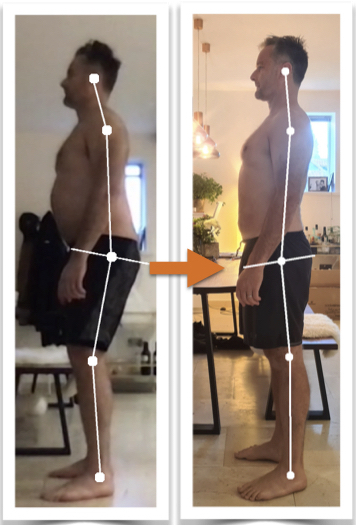Is It Too Late to Fix Your Posture in Your 40s, 50s, 60s or 70s?
Some clients walk into my clinic with pain, others walk in with posture issues that have been bothering them for years.
But one of the most common questions they ask is:
“Is it too late to fix this?”
They’re in their 30s, 40s, 50s — even 60s or 70s — and worried they’ve missed their window.
Deep down, most people already know it’s not too late — that’s why they’ve come to see me. But they still need reassurance that real change is possible.
How do I know it’s possible?
I’ve worked with clients as young as 5, and as old as 88. In the vast majority of cases, their posture improved, their pain eased, and their confidence grew.
If you’ve been living with poor posture for years, it’s natural to doubt what’s possible — especially if all you’ve ever been offered are temporary fixes like:
-
Massage
-
Manipulation
-
Generic stretches
-
“Quick fix” gadgets
It’s no wonder so many people give up, but here’s what most people don’t realise:
Posture isn’t set in stone — it’s a pattern. And patterns can change at any age.
Most people’s posture slowly declines — month by month, year by year — unless they actively do something about it.
If it can get worse over time, it can get better too.
What ‘Improvement’ Really Means
You don’t need “perfect” posture. You just need progress.
That might mean less pain, better movement, more confidence, or simply feeling and looking better in your body
I’ve seen these kinds of changes in thousands of clients in my clinics in London and Tunbridge Wells, and through online consultations as well.
Why It Can Work — No Matter Your Age
There are three key reasons posture therapy still works as we age:
1. Muscles remain adaptable for life
Especially postural muscles — they’re endurance-based and highly responsive to the right stimulus.
2. We meet your body where it’s at
We tailor the exercises to match your strength, mobility, and comfort level.
(Some 60-year-olds I work with are stronger than some 30-year-olds.)
3. We move at your pace
Your body tells us what it’s ready for. Some people make big changes quickly.
Others follow a slower, steadier path to give their body time to adapt.
Either way, we work with your body — not against it.
That’s one of the things I love about the Egoscue Method (the posture therapy approach I use). It doesn’t force posture to change. It gives your body what it needs so change happens naturally.
Real-World Results
This client in his 40s saw a dramatic improvement in posture, pain and alignment.
Want to see more examples? Head over to the [Client Results section of my website] — real people, real changes.
What You Can Do Right Now
The best time to start was 10 years ago. The next best time is today.
If you want to begin improving your posture — right now, safely and for free —
start with this [simple posture correction exercise that helps almost everyone].
It only takes a few minutes. It’s gentle, calming, and surprisingly effective. I’ve given it to Olympic athletes and to people who could barely walk into the clinic.
Final Thought
Your body is not too old, too stiff, or too far gone. You’ve just never had the right plan — tailored to your posture, your lifestyle, and your goals.
That’s exactly what I help people do.
Written by Ameet Bhakta
Posture Specialist | Health Through Posture
Clinics in London, Tunbridge Wells & Online
Trusted by GPs, consultants, athletes & busy professionals



